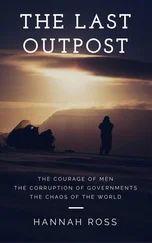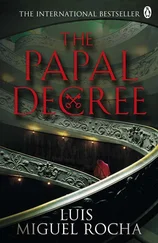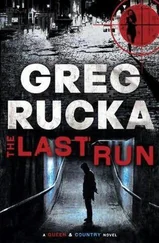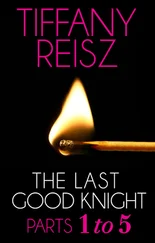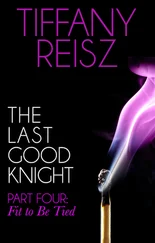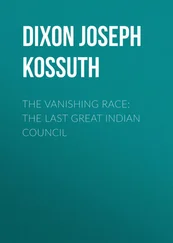“Who are you talking about?”
“Paul Marcinkus, from the Vatican Bank, and Roberto Calvi of the Banco Ambrosiano. And the key figure, the one who manipulated both of these men, the brains behind the whole black-market money-laundering scheme, Licio Gelli.”
“How is it possible to do something like that?”
“By means of shell companies based in South America and northern Europe, and later by purchasing foreign banks or using subsidiaries of the Banco Ambrosiano in order to bring money in or divert it. A lot of money. When the business prospered, Paul VI nicknamed Calvi ‘God’s banker.’ At some point, they expanded the operation. That is, Gelli began to demand that they launder more money, always through the Vatican and the Ambrosiano. Naturally, it wasn’t long before suspicions were aroused, and despite being brilliant bankers, Calvi and Marcinkus made mistakes. Actually, many mistakes. And it all blew up, in ‘the Vatican Bank scandal,’ shortly after the pope’s death.
“The Banco Ambrosiano,” Raul continued, “fell into the hands of Roberto Calvi, a known member of the P2 Lodge. Gelli, the Grand Master of the lodge, arranged for the Vatican Bank to take more than a twenty percent share of the Ambrosiano, involving it in irregular activities in Europe and America, with parallel, undercover societies for laundering money and other fiscal frauds.”
All of this crashed when the Bank of Italy declared a depletion of billions of dollars, which the Ambrosiano would not be able to cover. In the early eighties, when the investigations started, the Holy See’s tolerance of Calvi and his operatives’ manipulations was discovered, and it was also understood that the Vatican was willing to participate in the Ambrosiano Bank’s illicit activities. Calvi asked for help from the Vatican Bank, headed by Archbishop Marcinkus, but Marcinkus had enough trouble trying to save his own skin.
Albino Luciani was aware of these manipulations long before he became pope, because, as the patriarch of Venice, he was president of the Catholic Bank of Venice, one of the Holy See’s financial institutions. Later, from the papal throne, he had even greater access to information, which only brought increased danger.
“So they killed the pope because he was about to ruin them,” Sarah concluded.
“Exactly. And he was also planning to expose them publicly. They would all end up in jail. There was so much garbage piled up. For example, the Vatican Bank was intimately linked, through the P2, to the purchase of the Exocet missiles used by Argentina in the Falkland Islands War. Can you imagine all the implications this has?”
“Oh, my God.”
“They even used a Mafia type named Michele Sindona, who brought them large sums of money, serving as a link with Cosa Nostra.”
“Was he part of the group, too?”
“Yes, but Sindona wasn’t involved in the pope’s death, although a lot of people’s blood, including that of some notable magistrates, was on his hands. But at that point he was already up to his neck in other problems.”
“And nobody took care of the other frauds?”
“At some point, various European enforcement agencies and the U.S. Justice Department put two and two together. Even so, it took them a long time to unravel all the threads. But John Paul I, soon after being elected pope, met privately with U.S. Justice Department officials, who updated him on the situation, so that he could take whatever measures he deemed appropriate. John Paul I knew then that there were criminals in the Vatican and that he had to get rid of them. But they overtook him.”
“Were they the ones who killed him?”
“It’s not known. I believe they were morally responsible for the crime, just as guilty as whoever killed him.”
“Who was?”
“Licio Gelli, Roberto Calvi, and Archbishop Paul Marcinkus, along with Cardinal Jean-Marie Villot. Of course, someone inside the Vatican had to facilitate the actual killer’s entry, and then destroy all the clues. His Holiness was found dead at four thirty in the morning, and by six in the afternoon his private quarters were already cleaned and sealed, with the key under Villot’s control. And in a little over twelve hours, every vestige of Albino Luciani’s presence in the Apostolic Palace had been erased.”
“That’s efficient.”
“That’s really being in a hurry. At five thirty in the morning the same day, forty-five minutes after the pope was declared dead, the embalmers were already in the Vatican. With all that had to be done, it was suspicious that the Signoracci brothers were there so soon. Especially if we consider that Italian law permits embalming only twenty-four hours after death.”
Sarah shook her head.
“At six in the afternoon that same day, John Paul I was already embalmed. It was a flagrant violation of the law.”
“But what kind of poison would fool the doctors?”
“The pope wasn’t poisoned.”
“He wasn’t?”
“No. And no doctor was fooled.”
“Then-”
“Even a moron could see there was something fishy. A simple heart attack would never have made the pope’s enemies act so foolishly or hastily. When Paul VI died, barely a month earlier, the Vatican behaved in a completely different way.”
“And who exactly killed him?”
“Nobody knows his name. But I think he’s the man on our trail.”
“Then he’s got to be connected with the P2.”
“Yes. The one who killed John Paul I was, and is, a member of the P2.”
“And you don’t know his name?”
“Only his initials: J.C.”
“And where do I come into all this?” Sarah asked for the umpteenth time, hoping her father would finally make it clear.
“Where do you come into all this?” the captain repeated out loud, sighing as he tried to arrange his thoughts and make them understandable to others. “Valdemar Firenzi, who’s an old member of the P2, like me, found the famous vanished papers. He spent many years pursuing leads and gathering evidence, and finally, when he had already given up, he found them in the least likely place.”
“Where?”
“In the Vatican ’s Secret Archives.”
“How would they end up there?”
“I haven’t the slightest idea. You’ll have to ask J.C.,” Raul answered. “After the people connected with the case started to die off, I think he felt more secure. It really wouldn’t have been at all wise for him to keep the papers.”
“Agreed. It doesn’t matter. Firenzi found the documents, and then?”
“A short time earlier, Pietro Saviotti had reopened the case of the death of John Paul I in the District of Rome, and those papers acquired a tremendous importance as evidence. Aware of their value, and of the fact that many people would rather have them disappear, Firenzi decided to take them out of the Vatican and send them to people nobody knew, intending to save them. But since the walls of the Holy See have ears, he felt threatened. So what did he do? He sent a photo of Benedict XVI to Felipe Aragón and to Pablo Rincón, with a message intended to be understood only by them. And something happened, I don’t know what, that made him send the list to you.”
“But why me?”
“Because you’re his goddaughter. Don’t you remember our talking about him when you were little? He moved to Rome a long time ago, that’s why you don’t know him.
“He needed someone that didn’t belong to the organization, and figured that, after seeing my name on the list, you would get in touch with me and I would understand right away. The worst that could happen was that you wouldn’t pay any attention. He wasn’t thinking that he’d be captured. But he was, and somehow they found out about practically everything.”
Читать дальше

